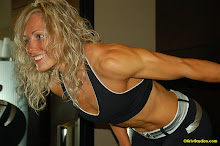It's summer time and you head out for a run. Before you even finish the first mile, your body feels as though it might ignite from the heat. It's not your imagination. Fifteen minutes into your run and your body temperature could be as high as 5 degrees Fahrenheit above normal. If you were to continue at this pace, fatigue and heat illness would no doubt take over.
STRATEGIES TO PROTECT YOURSELF FROM HEAT ILLNESS
The above scenario doesn't have to happen. Drinking enough fluid, whether it be water or a sports drink, is imperative for exercising in hot or humid weather. Maintenance of body fluids is essential to maintaining proper body temperature. Sweat dispels heat through your skin. If you let your body become dehydrated, you'll find it much more difficult to perform even the lightest of workouts. But, do not wait until you are thirsty to start replenishing those fluids. Chances are, by the time you actually feel thirsty, your body is already 1% dehydrated. Studies have shown that a fluid loss of even 2% of body weight will adversely affect circulatory functions and decrease performance levels.
The following strategies will help you protect yourself from the onset of heat illness:
1. HYDRATION
When you exercise regularly whether it is indoors or outdoors, you need to replace the fluids lost through sweating. This is even more important in hot weather, when you can lose more than one quart of water in an hour.
- Even if you do not feel thirsty, it's important to drink water at regular intervals during exercise
- In hot weather, drink at least 16-20 ounces of fluid two hours before exercising and another 8 ounces fifteen to thirty minutes before. While exercising drink 4-8 ounces every ten to twenty minutes.
- After exercising, drink enough to replace the fluid you have lost through sweating.
- Drinking cold water is absorbed into the system more quickly than lukewarm.
- Unless you are engaging in long workouts, there is no evidence that sports drinks off any advantages over water.
You should probably reduce the intensity of your workout, particularly the first few times you are exposed to higher temperature.
3. FITNESS
Physical training and heat acclimation can increase your blood volume, helping to regulate body temperature more effectively. The acclimatization process can be completed in 7 to 14 days of repeated heat exposure. However, you must always continue to drink fluids before, during, and after exercise.
4. CLOTHING
Wear minimal clothing to provide greater skin surface area for heat dissipation. Your clothing should be lightweight, loose fitting, and light colored to reflect the sun's rays.
5. REST
Know when to say "no" to exercise. Using common sense is your best bet for preventing heat stress when your Mother Nature turns up the heat.

